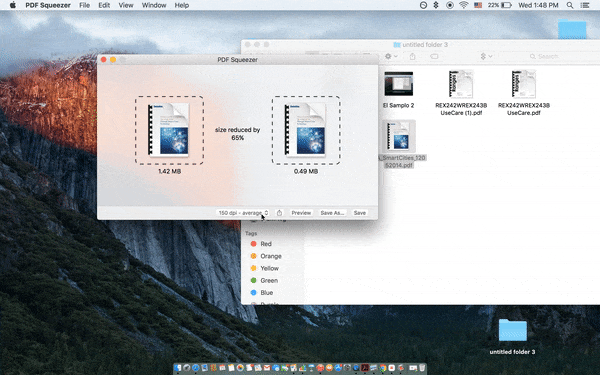

If a similar photo needs to have lossless compression or transparent areas, then a PNG-24 will be required. If you have a simple graphic with few colors and solid areas, then your best choice will be a GIF or PNG-8. We’ll take a look at how to get the best compression in each of the three file types starting with JPEGs. For information about compressing PNGs or GIFs, please scroll down this page. It’s easiest to compress a JPG (also called JPEG) because there’s just one thing to consider: quality. When you export to JPG from an image editing program, you’ll be prompted to select the quality level you want. You might just see a few choices like: low, medium, high, or maximum. You might be given a number range, for example 0 (lowest quality) to 12 (highest quality). Or you might be asked to select a percentage from 0% (lowest quality) to 100% (highest quality). You should always select the lowest quality that is still suitable for your purpose. One strategy for selecting the best level is to start with a fairly high quality setting and if it looks OK, try reducing the quality a bit. If the reduced level looks good enough, then try another reduction. When you hit a quality level that is unsatisfactory, then back up to the lowest level that was still good enough for your purposes. Always keep in mind what the purpose of the graphic is. If you are posting a flower photo to a botanical encyclopedia website, you probably want it to be fairly high quality so small distinguishing details can be clearly seen. If you are posting a flower photo just to celebrate the arrival of spring, then a much lower quality would probably be fine. Let’s take a slice of a flower photo and export it out at six different quality settings. The image below was exported at 100% quality. The 80% setting is virtually indistinguishable from the 100% setting. But let’s see if we can compress it further.Įven at 60% most people wouldn’t notice any difference from the 100% setting and since it’s a quarter the size, it would load four times as fast.įor many general uses, even this 40% quality image would be acceptable.


And five times faster to load than the original. The blockiness of extreme JPG compress in very obvious. Sample photo from FCIT’s collection of stock plant photos on the ClipPix ETC website.Īnother way to save file size with JPG is to slightly blur the image before you compress it. An image with fewer sharp edges and crisp details will compress much smaller.

Perhaps you intend to use a photo as a background image. That’s a perfect case for using a blurred photo. You can even blur just parts of an image and achieve file savings. Below is a photo of a day lily with a busy background. The file size is 77 KB when compressed at 60% quality.


 0 kommentar(er)
0 kommentar(er)
